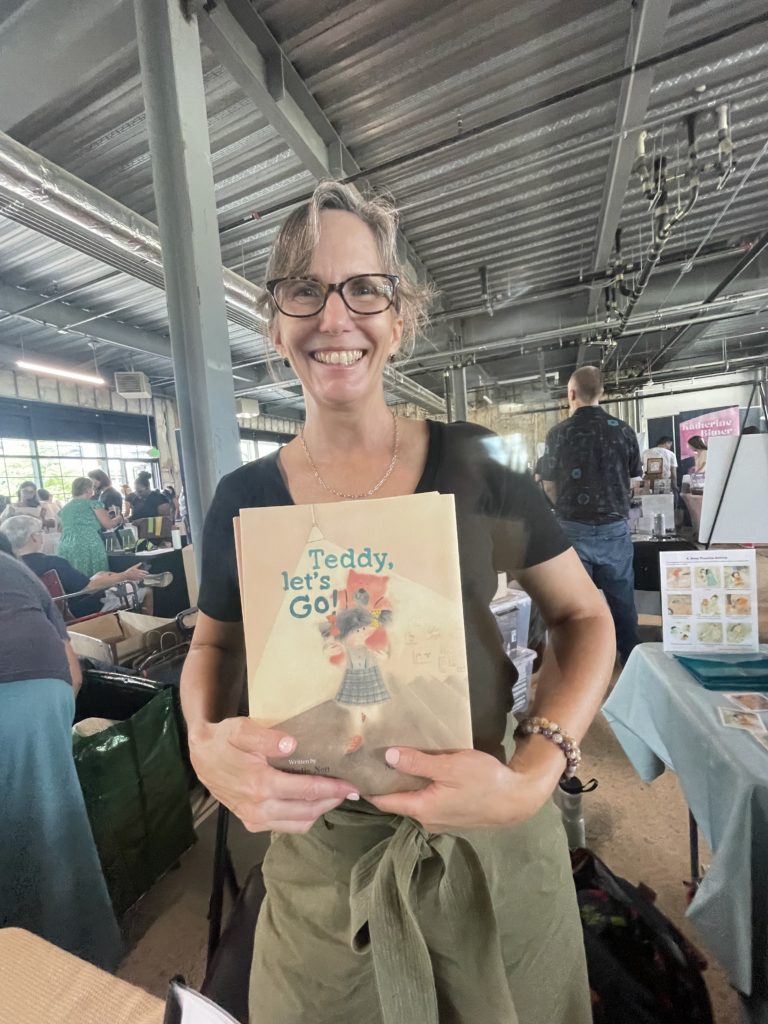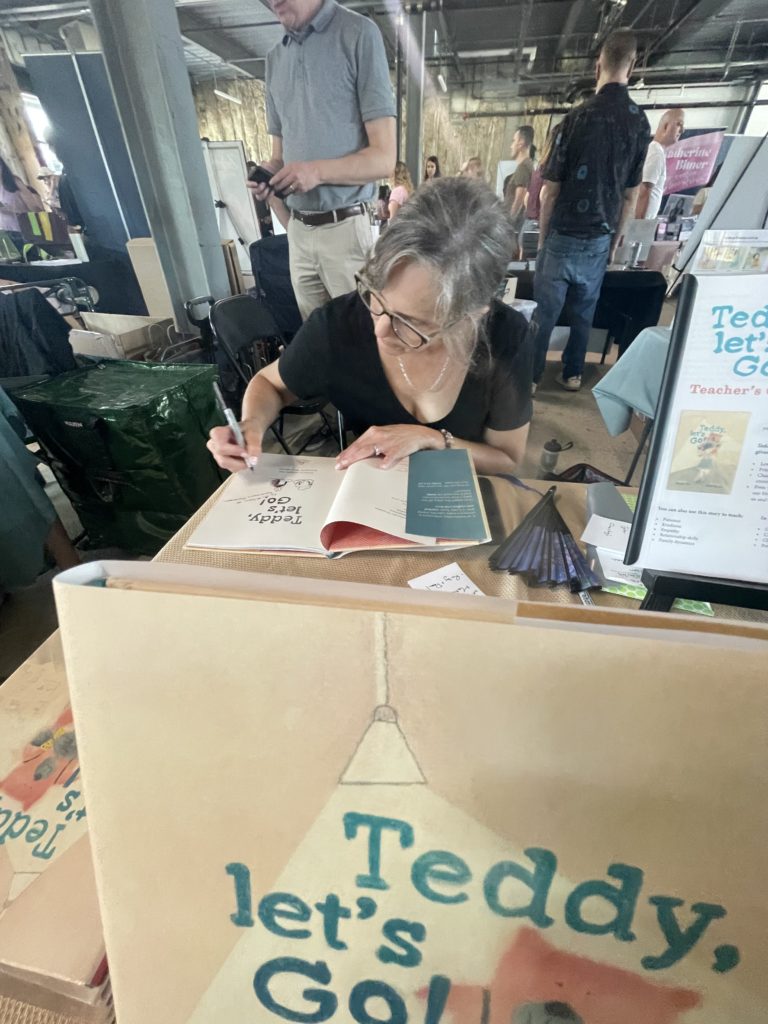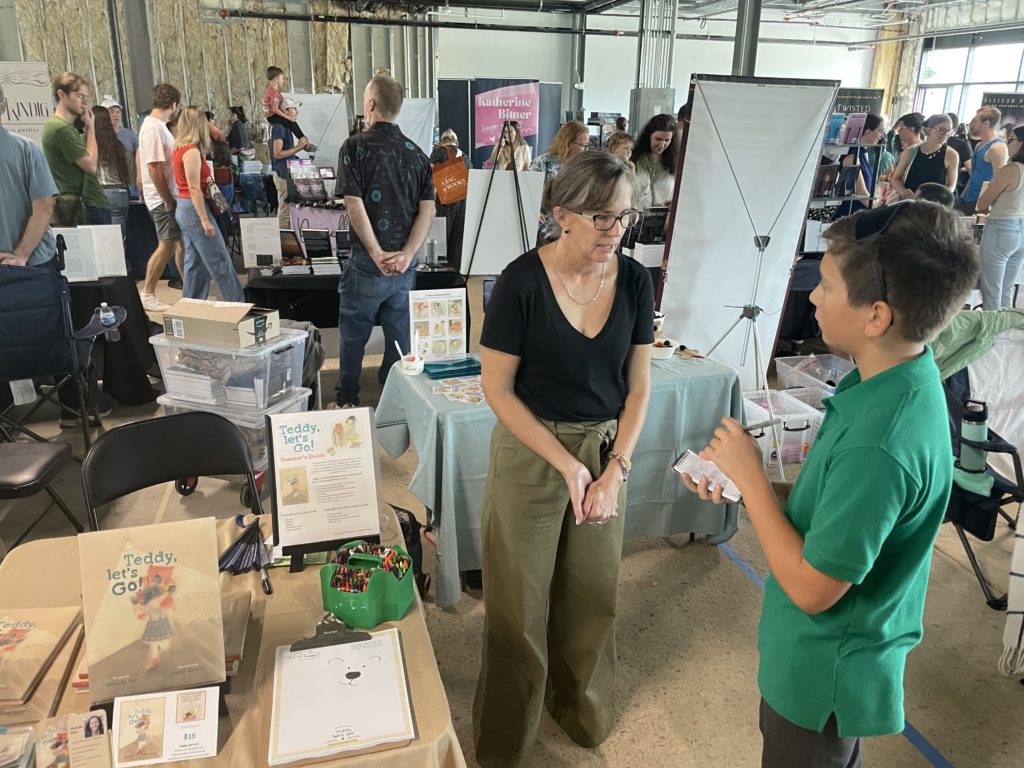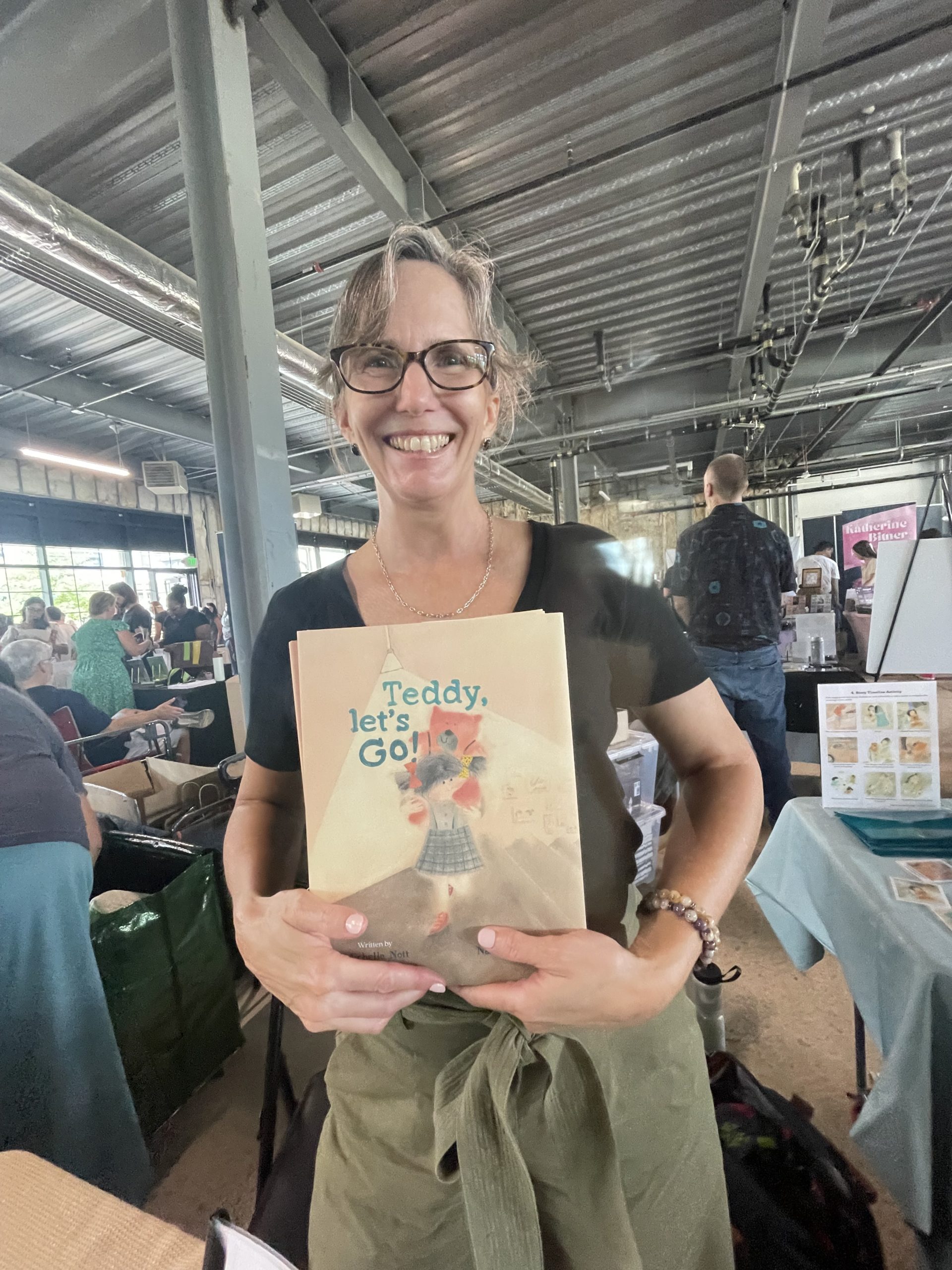“To write, you must also read.”
Michelle Nott, Montessori Guide and children’s author, promoted her latest title, Teddy, Let’s Go! at Front Paige Media’s Raleigh, North Carolina book fair this September.

Jackson Kincaid, a student at Bridgemont International School and one of Nott’s Creative Writing students, got the chance to interview her for this story. Below is their discussion.
[Kincaid] What got you interested in writing? [Nott] I majored in Education, specifically French, with a minor in Creative Writing in college, and then wrote poems for a magazine a little later. But what really got me into writing was when I noticed that my two daughters barely had any English picture books! Over two thirds of them were written in French! My daughters’ books were mainly in French because we were living in a French-speaking region of Belgium. At the time, I had been telling my daughters a bedtime story about a little girl who receives a stuffed bear, and they always liked it! So one day, I sat down at the table, and began to write. That later became the manuscript for ‘Teddy, Let’s Go!’
You’re a French and Creative Writing teacher at Bridgemont International School as well, so how do you find time to write? It’s a question of time management and healthy boundaries. I prioritize certain days or blocks of time each day for either Bridgemont, or my writing/publishing/editing. I mention this last type of work as three in one, because writing also involves publishing like publicity, social media, emails for events, etc. I do freelance editing as well, where I help new and established authors polish their manuscripts to send to publishers. That said, I always keep aware of Bridgemont emails so that I am available for my learners, no matter what day or time. Whether a student is reaching out to say hello, to share their work (on an assignment or anything), or have a question, I never want to miss that!

How many books have you written? Teddy, Let’s Go! is my third published work, along with my first book Freddie, Hoppie, and the Eyeglasses, and Dragon Amy’s Flames. Even though Teddy Let’s Go! is my third published work, it was the first manuscript that I had written.
Do you have any favorite authors? Yes! I have so many favorite authors, I can’t even list them all here! but a few of them are Kate DiCamillo, who has written books like Because of Winn-Dixie and The Tale of Despereaux. Another writer is Kwame Alexander, who has written books like The Crossover series, and How To Write A Poem.
Do you have any advice for young writers, and for writers in general? My advice to anyone who wants to write is to read a lot, in the genre in which they write and others. To write, you must also read. One of my favorite authors, Toni Morrison, said, “If you find a book you really want to read but it hasn’t been written yet, then you must write it.” I pass this advice on to others. If one person is searching for a particular story, chances are that someone else would also enjoy and benefit from that story. And so, you might as well be the person to write it.
Can you explain the process of publishing a book? These days, there are many ways in which someone can publish a book. Some of my freelance clients are self-published authors, but I only work on developing and editing their stories. So, I am not experienced enough in the business side of that path to say much. I do know, however, that self-publishers wear all the hats – publisher, art director, publicity, marketing, accountant, etc. It is a true entrepreneurial endeavor!
To publish in the tradition or trade sense, as I do, an author would first query their polished manuscript to an agent at a literary agency or directly to an editor at a publishing house. The advantage of having an agent is that many publishing houses are closed to un-agented writers. Although not all are. On occasion, an editor will open to un-agented work for a small window of time.
Once an agent signs a contract with an author, they will research editors that could be interested in the particular premise, genre, format, etc. and proceed to send the manuscript to them. Responses could come in within days, months, years, or sadly, never. Editors are swamped with work, so they usually tend to respond to a submission only if they are interested.
Once an editor is interested in a manuscript, they take it to an acquisitions meeting. This is where the editor pitches the story to everyone involved with the publisher – the art director, marketing director, accountant, etc. No matter how much the editors love a manuscript, if they do not all agree to publish the book, then that manuscript doesn’t go any further. In this case, the agent and/or author are free to send it elsewhere.
In the event that everyone agrees on acquiring the manuscript, the editor presents an offer to the agent who shares it with the author. There’s usually some discussion back and forth on the contract. Once everyone agrees, the contract is signed. From there, the editor researches illustrators and makes an offer similar to how they do for writers. Artists come on board to either illustrate the whole project, in the case of board books, picture books, and graphic novels or for cover art or possible chapter sketches in the case of novels.
Every step involved in trade publishing can take months, if not years. From what I hear, this is a big reason why some writers choose to self-publish. My preference is traditional publishing because it’s important to me to have my books available in bookstores and libraries. To know that families from here to Australia can purchase or check out my picture book Teddy, Let’s Go! is a wonderful feeling. Self-published books, unfortunately, are much harder to get into these spaces. Everyone’s publishing journey differs, one to another. What I describe above is generally what happens in the publishing industry. Whichever path a writer chooses, whether trade or self-published, will be determined by their inspiration, motivation, and publishing goals.
For more information about Michelle Nott, visit https://www.authormichellenott.com/.

Jackson Kincaid, guest reporter for the Montessori Post, is 12 years old and in the 7th grade at Bridgemont Montessori School. He enjoys reading and writing science and historical fiction, and enjoys creating music.

Leave a Reply